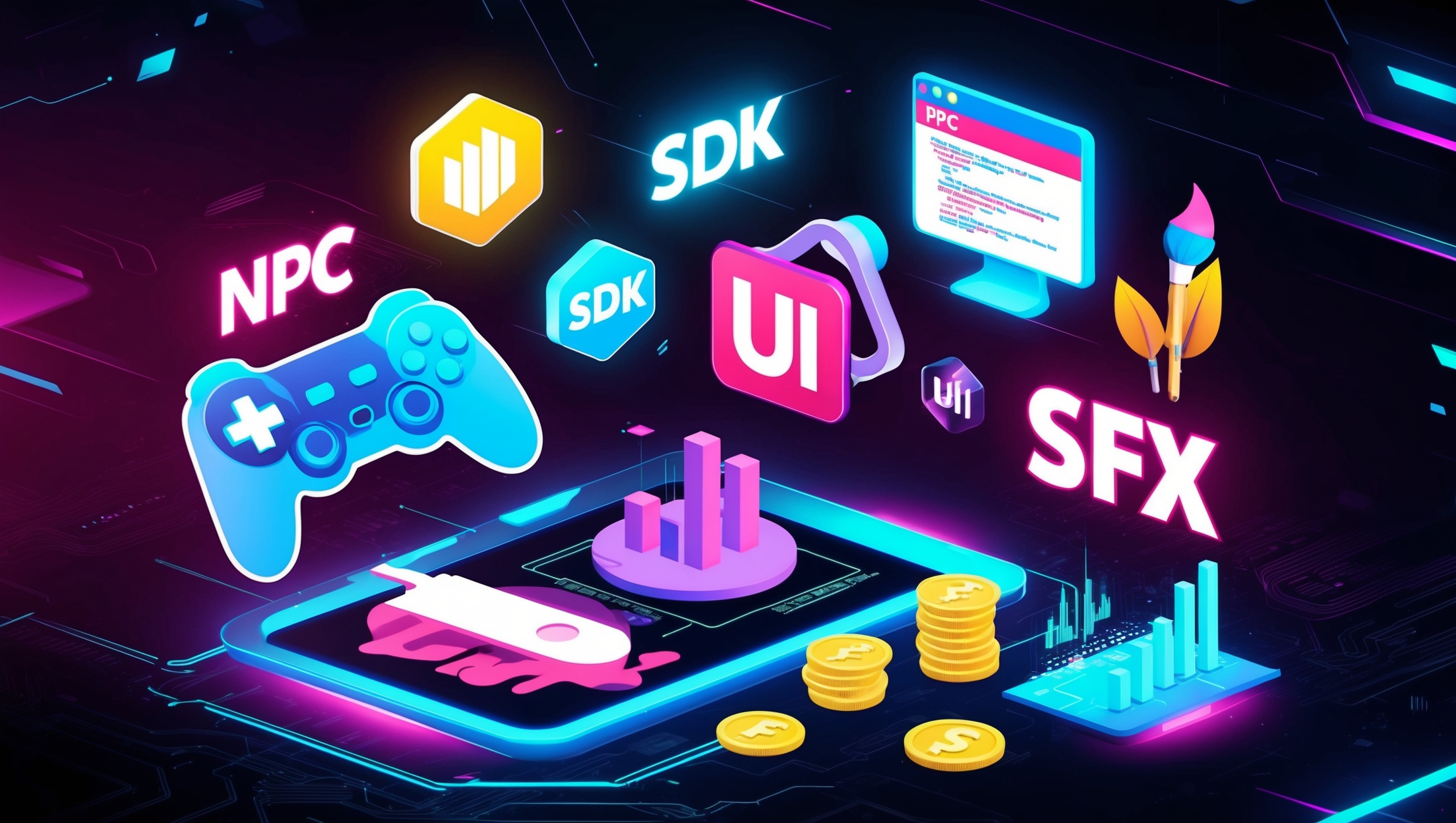
In game development, abbreviations are everywhere. They save time, keep communication sharp, and act as a kind of industry shorthand. But for most newcomers (and sometimes even seasoned pros), this “alphabet soup” can be overwhelming.
Here’s your go-to glossary of the most common abbreviations in game development, divided by topics and professions.
1. Game Design & Development Basics
- FPS – First Person Shooter: a genre where the protagonist’s perspective is used to view games.
- GDD – Game Design Document: A detailed plan that describes all aspects of the game.
- HUD – Heads-Up Display: a user interface that shows the player’s health, ammunition, and score on the screen.
- MMO – Massively Multiplayer Online Game (MMO): online games that have thousands of players.
- MVP – Minimum Viable Product (MVP): The smallest playable and functional version of a game, made to test fundamental concepts before full-scale development.
- NPC – Non-Player Character: any character that the gamer does not control.
- PvE – Player vs. Environment: Gamers fight against artificial intelligence (AI)-controlled opponents or challenges.
- PvP – Player vs. Player: Players compete against each other.
- QoL – Quality of Life: Features that enhance the gaming experience without changing the core gameplay.
- RPG – Role-Playing Game: Players assume the roles of imaginary characters.
- TPP – Third Person Perspective: The player character is either behind or surrounded by the camera.
- UI – User Interface: every visual component with which the player can interact.
- UX – User Experience: The overall feel and usability of the game.
- XP – Experience Points: Experience points a player earns to level up.
2. Programming & Technical Terms
- AI – Artificial Intelligence: The logic that enables realistic NPC behavior.
- API – Application Programming Interface: A set of rules that allows different software to interact.
- FPS (Performance) – Frames Per Second: How many images are displayed per second in a game.
- LOD – Level of Detail: a technique that uses distance to modify the complexity of 3D models.
- SDK – Software Development Kit: Libraries and tools for integrating or developing features.
3. Art & Animation
- 2D/3D – Two-Dimensional / Three-Dimensional: The basic visual styles of a game.
- DOF – Depth of Field: A blur effect that simulates the camera’s focus.
- FOV – Field of View: How much of the game world is visible on screen.
- HUD – Heads-Up Display: on-screen data like ammunition, score, or health.
- Rig – 3D models are animated using a skeleton framework.
- UI – User Interface: the visual components with which players engage.
- UX – User Experience: How fun and easy the game is to use.
- VFX – Visual Effects: aspects that are not static – smoke, explosions, or magical effects.
4. Audio & Sound Design Terms
- BGM – Background Music: Music played during gameplay.
- FMOD – Well-liked audio software for incorporating sound dynamically.
- SFX – Sound effects: Footsteps, gunshots, clicks in the user interface.
- VO – Voiceover: Recorded narration or character voices.
- Wwise – Another leading audio software used in many games.
5. Monetization and Business
- ARPU – Average Revenue Per User: A crucial KPI for games with a profit.
- CPI – Cost Per Install: Marketing expenses to acquire a single new participant.
- DAU – Daily Active Users: Number of unique players per day.
- DLC – Downloadable Content: Additional game content sold separately.
- F2P – Free to Play: Games that are available for free download but are made profitable by in-app purchases
- IAP – In-App Purchase: Paid content available in a game.
- LTV – Lifetime Value: Total revenue earned by a player.
- MAU – Monthly Active Users: the monthly number of distinct gamers.
- P2P – Pay-to-Play: Games that require a purchase before playing.
- P2W – Pay-to-Win: Purchases provide in-game benefits.
6. Quality Assurance (QA) and Testing
- BVT – Build Testing: Making quick checks to ensure the stability of the final construct.
- QA – Quality Assurance: Making certain that the game functions as intended.
- RTM – Release to Production: The final approval stage before the game is released to production.
- TDD – Test-Driven Development: Writing tests before the actual code to ensure reliability.
- UAT – User Acceptance Testing: Testing with actual users in the last phase before deployment.
Why Knowing These Acronyms Matters
Gaining proficiency in these phrases will improve teamwork, speed up communication, and reduce miscommunications while creating games.
The Melior Games team ensures that your project is developed, tested, and launched with exceptional quality, whether you need a polished F2P mobile game, an MVP to pitch to investors, or thorough quality testing.




